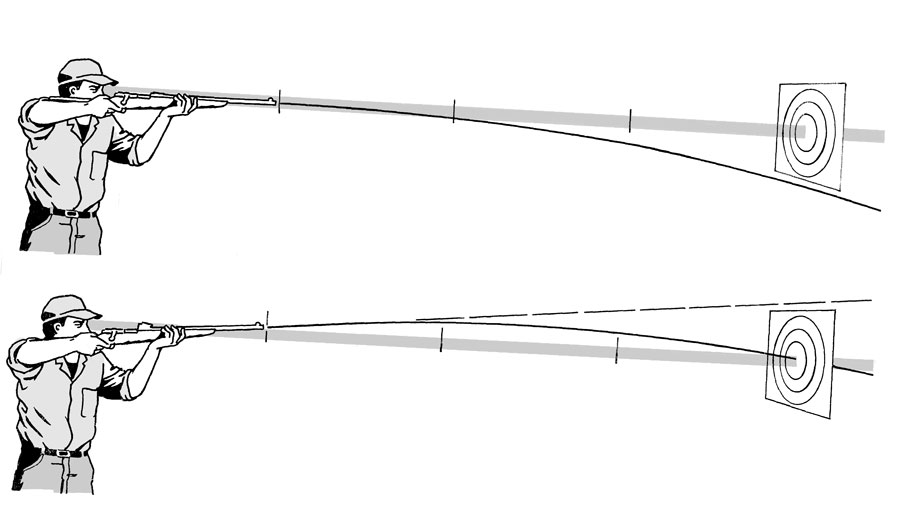Firearms Safety
Loading your firearm safely
Old shotguns
Shotguns with any pitting of the barrel should not be fired. Modern ammunition must not be used in old shotguns. The barrels may not be strong enough for the high pressure of modern ammunition.
Get a gunsmith to check your old gunshot before you use it.
Firearm magazines
All repeating and firearm actions have a magazine where the ammunition is held before being fed into the chamber. Most bolt action rifles have box-type magazines with the cartridges placed one on top of the other. Many lever action and pump action firearms, and some self loading, have a tubular magazine where the cartridges are placed endon, one behind the other.
A tubular magazine can be dangerous. If the tube has been dented, the cartridge can stick temporarily. If it later becomes free it can be fed into the action without you even knowing about it.
To obey Basic Rule 2 – always point firearms in a safe direction – and Basic Rule 5 – check your firing zone – you need to know about Patterning and Sighting In.
Patterning
Before you use a shotgun for hunting you need to see what sort of pattern it fires with the cartridge and choke combination you intend to use. Patterning is a practical exercise that involves shooting a specific barrel, choke and shotshell combination onto a flat (vertical) recordable surface (sheet of paper). For more information refer to the Shotgunning Education Handbook at www.gma.vic.gov.au.
Sighting In
‘Sighting in’ with a rifle is even more important. If your rifle has a telescopic sight a dealer or gunsmith can check that the sight is correctly set according to a collimator. However, it will still require checking with the ammunition you intend to use. Do this on a range or suitable rural area.
Setting of sights for accuracy
Sights must be correctly set. If they are not, rounds may fall short or go far beyond the target. Adjust the sights for distances suitable for the calibre and intended use.
‘Sighting in’ is best carried out on an established range. Otherwise, it should be somewhere away from people, stock or property, and with a safe backstop.
- Shoot from 25 metres and adjust sights until the point of aim and the bullet impact are the same.
- If you are using iron (open) sights always move the rear sight in the direction you want the shot to move. The foresight is the reverse of this. With a scope, follow the arrows on the scope adjustment.
- Now, from 100 metres, fire shots in pairs, and adjust sights.
- Most high-powered rifles are best zeroed so the bullet hits the target about 75 mm high at 100 metres.
A bullet begins dropping from the moment it leaves the barrel, so if your sights are just lined up with the barrel, the bullet will drop below where you are sighting.

Mechanical fitness of firearms
It is dangerous to tamper with firearms. Even minor repairs or adjustments should be carried out by a competent gunsmith. Never exchange bolts, bolt heads or other action parts yourself.
Get a gunsmith to fit these.
Items that need to be checked:
- Headspace
- Firing pin protrusion and shape. (for safe, reliable firing.)
- Tightness of action and stock. (affects accuracy.)
- Condition of barrel and chamber. (for safety and accuracy.)
- General condition of firearm, including action and stock.
- Safety catch. (only supplements safe handling)
- Trigger pull. (for safety and accuracy the trigger pull set by the manufacturer should be used. Trigger pull should only be changed by a competent gunsmith.)
Reloading ammunition
When you have gained experience you may wish to reload ammunition yourself. This can save you money if you fire a lot of rounds. It also offers you the chance to learn a new skill.
Before you begin, you will need to speak to an experienced reloader for advice and instruction. You will also need the right equipment, powder and projectiles. You can find more information online, or in books dealing with this subject.
Before using your firearm
If you intend to use your firearm on a shooting range or in the field check that:
- The firearm is mechanically sound
- It is not loaded
- The barrel is not blocked
- The grease and oil is removed from the barrel and action
- The ammunition is correct for the firearm
- The firearm is not left unattended
- The firearm is made safe and secure.

